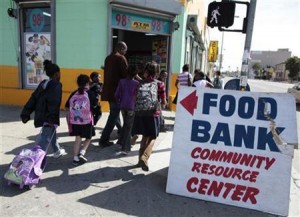PALO ALTO, California — Although some aspects of California’s economy recovered from the Great Recession, the percentage of the state’s children living in poverty continued to rise after 2009, reports KidsData.org.
According to the most recent data available from the U.S. Census Bureau, in 2013, 24 percent of California’s children were living below the Federal Poverty Level (FPL) of $23,624 for a family of four.
The numbers were even higher for some groups. Forty percent of children living in single-parent households had family incomes that fell below the FPL in 2013, compared to 14 percent who lived with two parents.
When divided by race/ethnicity, 36 percent of African American/black children, 35 percent of American Indian/Alaska Native children, and 32 percent of Latino children lived below the FPL in 2013, compared to 11 percent of white children.
The FPL does not reflect the true story for California. It is based on the cost of food a family needs to meet basic nutritional requirements, but does not factor in other necessary expenses such as housing and childcare.
This is problematic for understanding poverty in California, as the state is large and diverse, and is home to some of the most expensive housing markets in the nation.
An alternate measure, the California Self-Sufficiency Standard (SSS), takes into account these necessary expenses (and the regional variation among them) to produce an income standard for each county that would allow a family of a certain composition to make ends meet without public or private assistance.
On average, these Standards are more than double the FPL. For example, the SSS for two adults, one pre-schooler and one school-aged child is $63,979, compared to the $23,624 FPL. In 2012, more than half of California’s families had incomes that fell below the Self-Sufficiency Standard for their county.
Like us on Facebook



